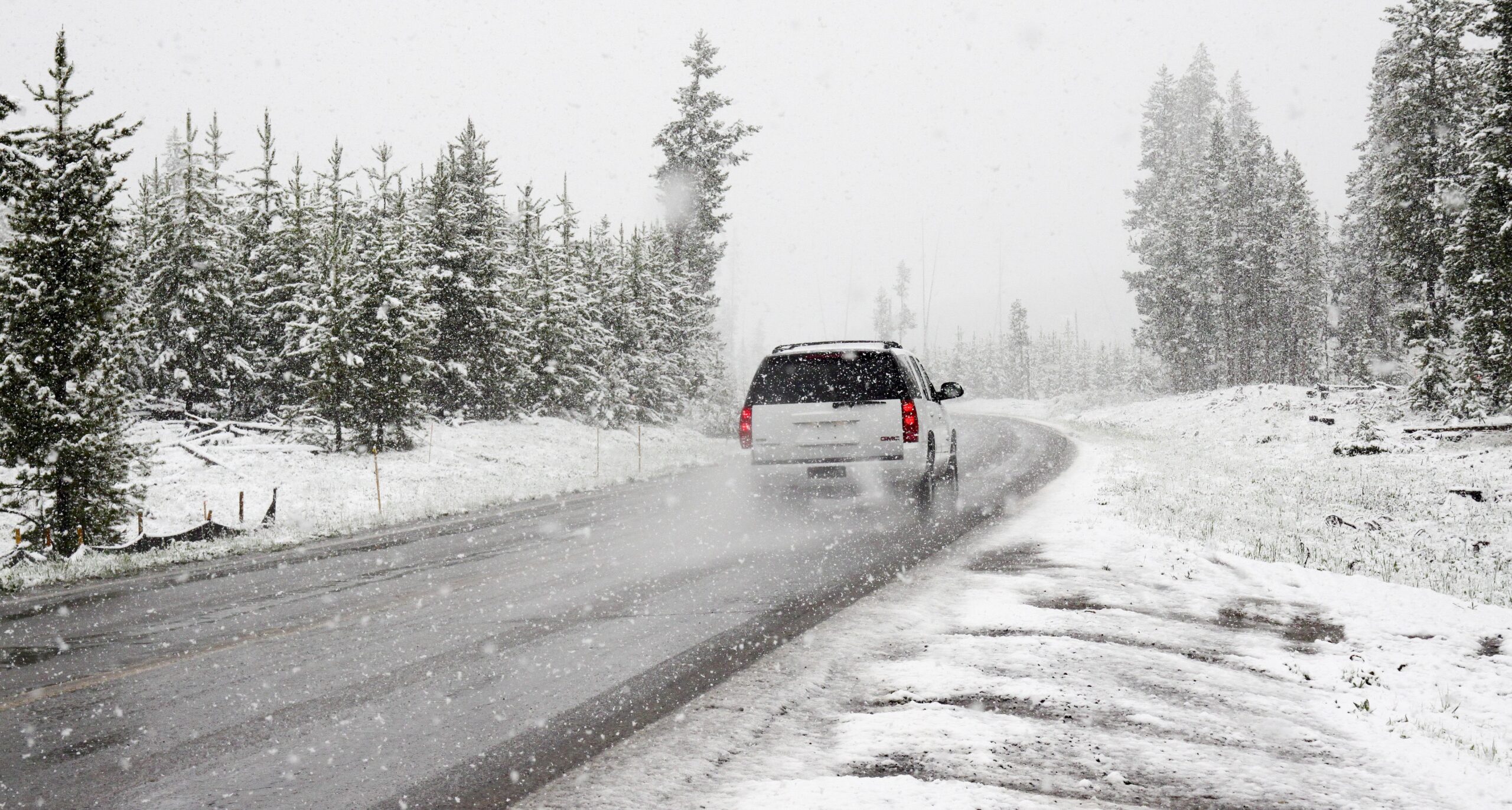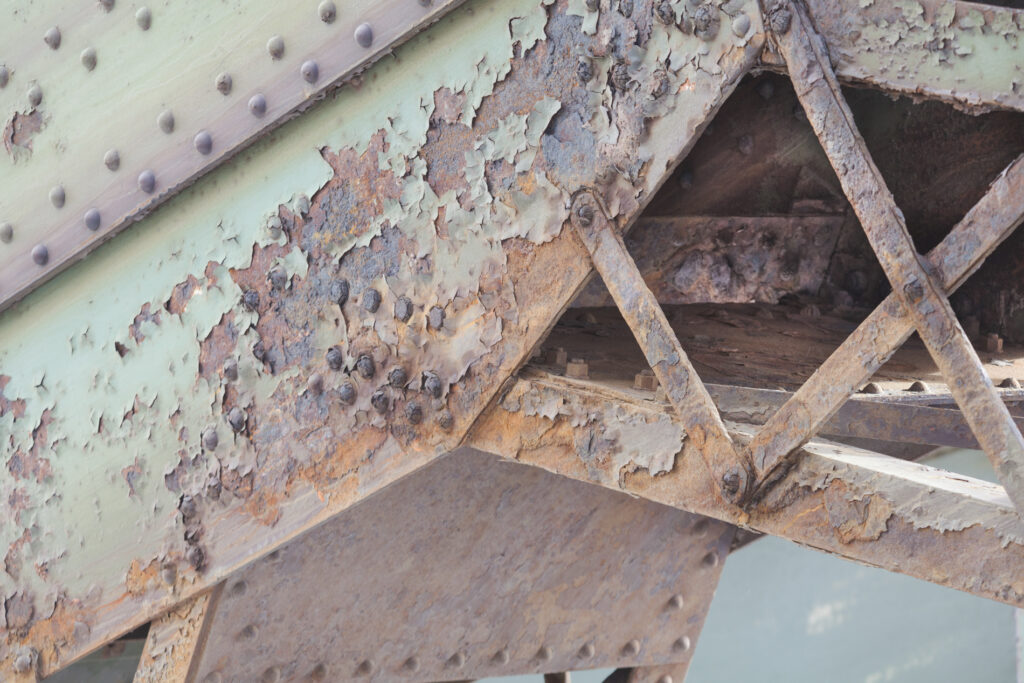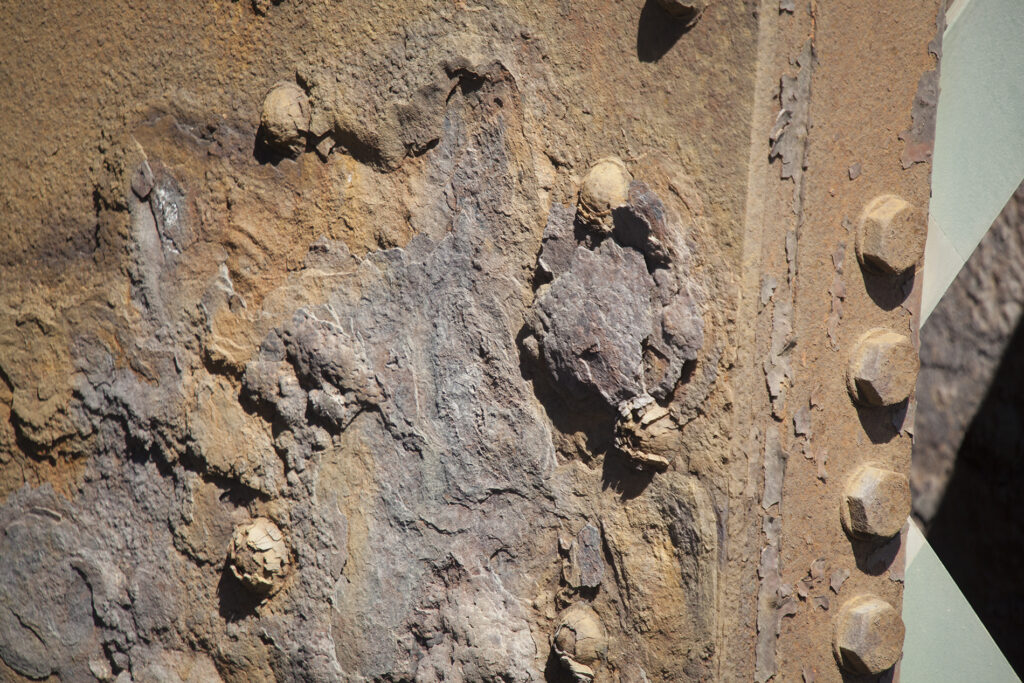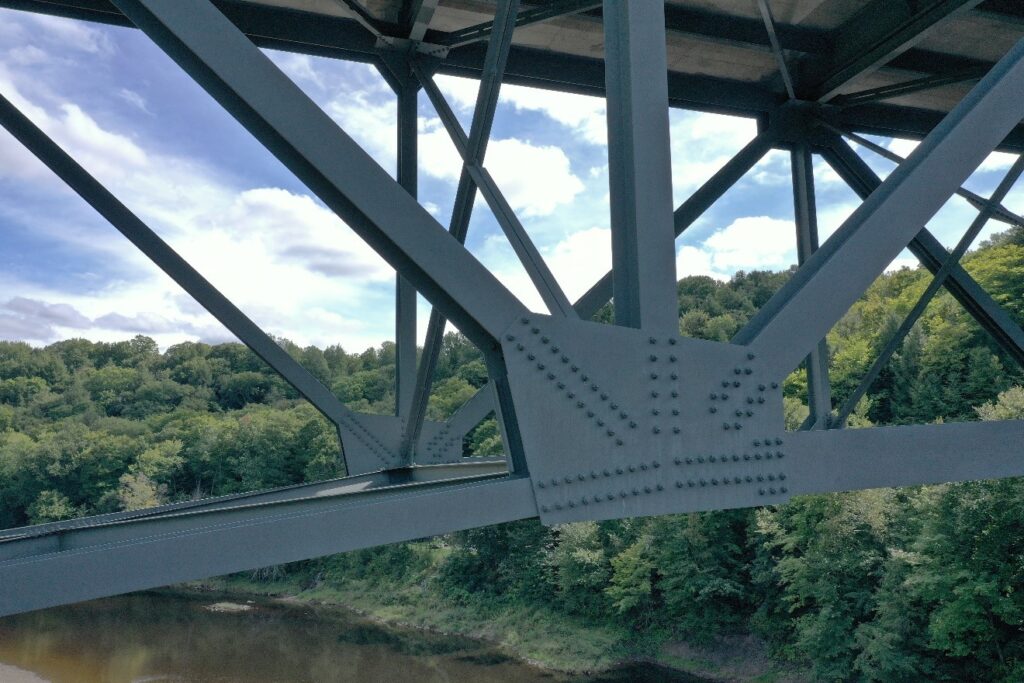The Importance of a Clear Specification:
Prepare, Apply and Control with Precision In the coatings industry, a clear specification is far more than a simple costing tool. It is a true

Quebec faces harsh weather conditions every winter with a double-edged sword: de-icing salt. Heavily used to de-ice roads and ensure user safety, this beneficial product is not without harmful consequences, particularly for our valuable steel and concrete infrastructures.
The Destructive Impact on Bridges and Roads
De-icing salt, primarily composed of chlorides such as sodium chloride (table salt), calcium chloride, or magnesium chloride, is essential to prevent road ice formation. However, its corrosive effect on metal and concrete structures is well documented. These aggressive substances penetrate deeply into concrete and reach the reinforcing steel, causing accelerated corrosion and premature structural damage.

A striking example is the Champlain Bridge in Montreal, demolished in 2023, whose lifespan was significantly shortened by the corrosive action of road salts. Initially designed to last much longer than its 57 years, it had to be replaced at great expense, perfectly illustrating the high costs associated with the intensive use of de-icing salt.
Significant Economic and Environmental Costs
The economic repercussions are equally alarming. Each ton of de-icing salt spread on Quebec roads results in direct costs estimated between $469 and $1,450 in damage to infrastructure and vehicles, according to studies cited by the Quebec Ministry of Transport. On a provincial scale, this represents direct costs that can reach several billion dollars per year, not to mention the indirect costs associated with traffic disruptions and periodic repairs.



The environmental impact is also concerning. Once dissolved by melting snow, de-icing salt infiltrates soils and surface waters, contaminating aquatic ecosystems and threatening the quality of our drinking water sources. Bodies of water like Lake Clément, north of Quebec, are particularly vulnerable to runoff water loaded with road salts, endangering crucial water sources for the city.
Promising Alternatives: Towards More Sustainable Management
Faced with these challenges, alternatives to traditional de-icing salt are beginning to emerge. In New York, for example, products like potassium acetate are used successfully to preserve the city’s iconic bridges while reducing environmental impact. Although more expensive initially, these alternative de-icers offer increased durability and significant ecological benefits.
In Quebec, local initiatives such as using complementary abrasives, beet juice that makes salt grains sticky and reduces the required quantities, and biodegradable organic acetates also show promising potential. However, these solutions require higher initial investments and sustained political will for widespread adoption.
Reference: https://www.journaldequebec.com/2023/03/13/le-sel-ronge-nos-ponts-en-acier-et-en-beton
How to Protect Steel from Salt Attacks?
The solution is relatively simple: a coating must cover steel reinforcement. It is essential to prevent salt from coming into contact with bare steel. The real question is how to choose the best coating? Many factors come into play. Given that these are significant works, our engineers must refer to products approved by the MTQ in Quebec.
Rust-Anode Primer is one of the approved products and offers a solution that stands out from conventional paint systems. The lifespan is very long with cathodic protection, where zinc sacrifices itself to protect the steel. The difference is even more pronounced when an impact exposes the steel. Unlike paint systems, Rust-Anode Primer does not blister; moisture and contaminants will not affect the underlying film, and only a slight rust scar will be visible, significantly limiting the destruction of the structure.
Other Important Points:
Rust-Anode Primer shows exceptional resistance to salts, having passed the 10-cycle ASTM D5894 corrosion test. The modification we requested during this test was to vary the temperature during the test, ranging from 25°C to -23°C, to simulate the winter season. Hot-dip galvanized steel plates were tested simultaneously for performance comparison, and Rust-Anode Primer obtained comparable results.
Another advantage to note is that the Rust-Anode Primer can be overcoated with polyurethane paint to achieve a specific color and increase its durability. We suggest not overcoating the Rust-Anode Primer for economic reasons and to facilitate its maintenance over time, as the coating can always be overcoated by itself without the need for abrasive blasting.
Finally, one of the critical points in steel protection is maintenance. When rust and corrosion issues are observed, addressing them as quickly as possible is crucial to avoid high maintenance costs and accelerated deterioration of our structures. It is proven that preventive maintenance costs are undoubtedly the solution to adopt to reduce long-term costs and thus minimize the impact on the refurbishment of infrastructures.

Conclusion: Finding the Balance Between Safety and Durability
In conclusion, while de-icing salt remains the solution currently used to ensure road safety in North America during winter, its intensive use poses a significant challenge to our infrastructure and environment. The future lies in adopting more sustainable alternative solutions to preserve our infrastructure while reducing our ecological footprint. Continuous research and innovation in this field are essential to finding the optimal balance between safety, durability, and keeping our natural environment.
The Rust-Anode® technology allows for on-site zinc recharging of new or used structures damaged by rust or corrosion and offers the same performance as hot-dip galvanization.
Prepare, Apply and Control with Precision In the coatings industry, a clear specification is far more than a simple costing tool. It is a true
In 2024, Trifluvienne Pneus & Mécanique SL turned to Galvatech 2000 to extend the service life of their galvanized metal roof, which had been in
A sheet pile wall was installed for a new development project adjacent to a train yard. Covering approximately 22,000 square feet, the project team chose
Galvatech
304, rue Plourde
St-Leon le Grand, (Quebec)
Canada G0J 2W0
Phone : 418 743-2046
Toll-free : 1 888 743-2046